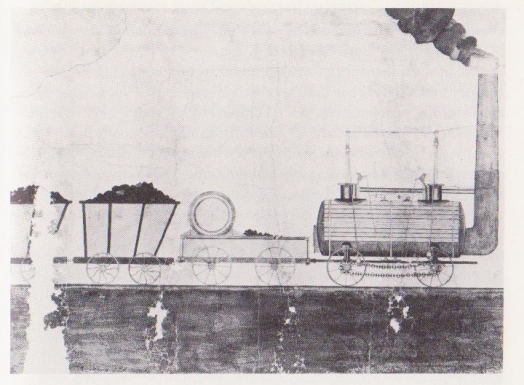Killingworth Colliery locomotive
Resource Type: Image | Posted on 7th November 2011 by Liam Physick
This illustration from The Rainhill Story shows a typical locomotive in use at the Killingworth Colliery. In 1803, the 22-year-old George Stephenson was appointed as the Colliery’s superintendant engineer: in 1813, he assumed responsibility for all collieries owned by the Grand Alliance (a company comprising all major mines in County Durham). Stephenson, inspired by the success of Puffing Billy at Wylam Colliery, persuaded Sir Thomas Liddle (later Lord Ravensworth), the owner of the Grand Alliance Company, that the Colliery would benefit from the use of steam locomotives, and in 1814 he was allowed to design the Blucher, his first locomotive, in the Colliery workshop behing Stephenson’s house, Dial Cottage. It pulled coal trucks along the wagonway from Killingworth to the coal staithes at Wallsend. It was slow and unreliable, but it had two vertical cyliners set into the boiler which enabled it to pull up to 30 tons up a gradient at a speed of four miles per hour. Even more significantly, it did not use cog and rank pinions, instead utilising flanged wheels - the first successful locomotive to do so, and followed Puffing Billy in using adhesion to power itself. In 1815, Stephenson improved the Blucher by making the connecting rods drive the wheels directly and coupled each pair of wheels together using a chain. The Blucher made Stephenson’s reputation and over the next five years he built 16 more locomotives (many of which were built by recycling the Blucher’s parts) at Killingworth, some for the Colliery and some for the Duke of Portland’s wagonway between Kilmarnock and Troon, which improved on the earlier engine, and its success led to him being commissioned to build the Liverpool and Manchester Railway
Categorised under: Landmarks, Landscapes & Locomotives

Comments